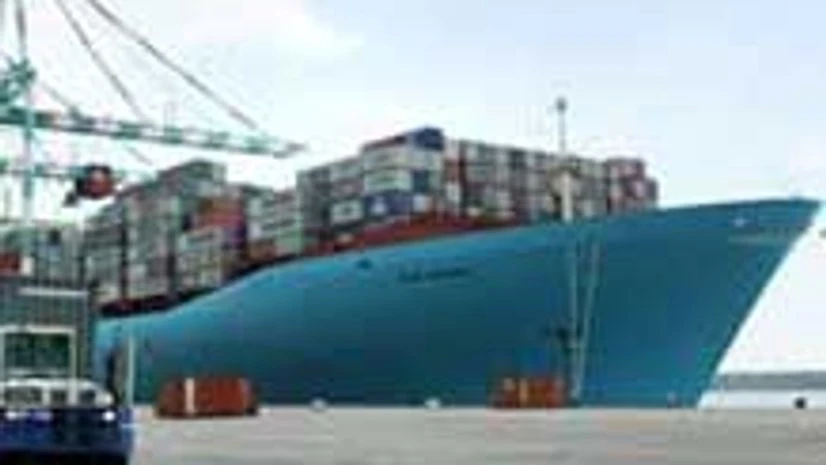At a time when economic growth refuses to perk up drastically to raise hopes of employment generation, it seems a massive job boom is going to come from the merchandise export-oriented units.
Exporters are anxiously looking to hire a large number of workers to support the growth and rise in demand that they are currently witnessing in the international markets.
The export sector is showing a gradual turnaround of sorts with revival of growth in some of its traditional markets like the US and Europe. Merchandise exports grew double digits for four straight months till October in 2013-14. Even though the merchandise outbound shipments rose just 5.86 per cent in November year-on-year, players are confident that outbound shipments may again witness huge growth from December onwards.
Some of the sectors where jobs are waiting to be grabbed are textiles, including apparels, leather and handicrafts, including powerlooms and handlooms.
Some of the star trading houses in these segments are not only offering higher wages, they are also providing several perks so as to retain the workforce, which have deserted them to take part in schemes like Mahatma Gandhi National Rural Employment Guarantee Act (MNREGA), which guarantees hundred days of wage-employment to a rural household in a financial year.
Exports, which receive about 40 per cent contribution from the small and medium enterprises, employ about 170 million people across the entire value chain, according to a study by Assocham.
In some of these sectors such as textiles, ready-made garments, leather and handicrafts the potential of employment is huge. For example, the handicrafts sector which employs around 7.5 million people is facing a manpower crunch of over two million at present.
“We are not getting the artisans we require. They are all going for MNREGA-like programmes and refusing to come back. We are facing acute shortage of skilled artisans,” said Lekhraj Maheshwari, a Jaipur-based handicrafts player, who exports metal wares and imitation jewellery in the American markets.
Maheshwari, who is also chairman of export promotion council for handicrafts (EPCH), has asked the government to include handicrafts artisans under the ambit of MNREGA. Handicrafts export is expected to rise 10 per cent this fiscal over last year.
Similarly, the textiles industry, including garments, employs around 12 million people. However, 20-25 per cent of workers remained absent in some of the leading garment export firms during the harvest and festive seasons this year.
“This is one of those rare moments when we can gain back a significant share of the market. We can give Bangladesh, Vietnam and China a run for their money but the situation created by MNREGA is getting worse every year. Sadly, the workforce is not part of the opportunity,” said Ravi Toshniwal, joint managing director, Banswara Syntex, that has a premium clientele like Dockers, Levi’s and Next.
Toshniwal, who employs about 9,000 people, said up to 25 per cent of workers do not come for work during harvest season. “People take leave for 15 days and do not come back for two to three months. So, technically, they are getting benefits from both. The government should put in place a mechanism whereby they should be able to ascertain an employed and an unemployed person through the Aadhar card before offering them benefits of MNREGA.”
According to the Labour Bureau, employment in the exporting units has increased by 282 thousand at overall level during the quarter ended June 2013, year-on-year. Some of the topmost export sectors that witnessed rise in employment are textiles, apparels and leather.
The highest contributors to the increase in employment under the exporting units are textile including apparels sector where the employment has increased by 98,000 followed by leather at 16,000 and 2,000 each in automobiles and information technology sectors. There was also marginal increase in employment by three thousand in gems and jewellery sector.
Sudhir Dhingra of Gurgaon-based Orient Craft, one of the country’s leading garment exporters, said it is paying overtime, housing allowance and subsidised food in some cases to attract workers.
Dhingra, who is expecting a 30-40 per cent top-line growth this fiscal over last year, said MNREGA has damaged the work spirit. “The comfort of staying at home, near the family, is killing the labour spirit. Aspirations are getting subdued. Those days of not focusing on labour as an important component of business are over.”
Dhingra, who employs around 20,000 people mostly from UP, Bihar and Jharkhand, is looking to recruit more. “The level of minimum wages between India and China is not much but the only difference is in quality of talent.”
The exporting firms had witnessed huge job losses to the extent of around two million during the financial crisis in 2008-09. Last year, over one million jobs were lost on account of export contraction across different sectors like leather, apparel, gems and jewellery, Assocham said.

)
